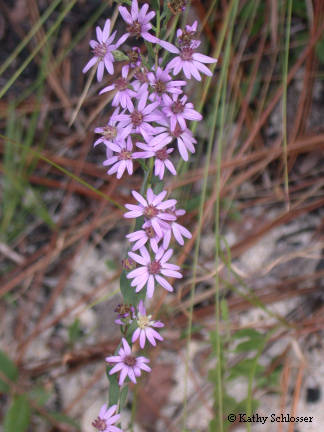They are unusual and interesting - tall and skinny with many flowers when in bloom.
More info:
Plant Details
Symphyotrichum concolor var. concolor [= Aster concolor]
Eastern Silvery Aster
Scientific Name: |
Symphyotrichum concolor var. concolor [= Aster concolor]
|
|---|---|
Genus: |
Symphyotrichum
|
Species Epithet: |
concolor var. concolor
|
Common Name: |
Eastern Silvery Aster
|
Plant Type |
Herb/Wildflower
|
Life Cycle |
Perennial
|
Plant Family |
Asteraceae (Aster Family)
|
Native/Alien: |
NC Native
|
Size: |
1-3 ft.
|
Bloom Color(s): |
Pink, Purple
|
Light: |
Sun - 6 or more hours of sun per day, Part Shade - 2 to 6 hours of sun per day
|
Soil Moisture: |
Moist
|
Bloom Time: |
September, October
|
Growing Area: |
Mountains, Piedmont, Sandhills, Coastal Plain
|
Habitat Description: |
Sandhills, Piedmont woodlands, forest edges, roadbanks. Rare in NC Mountains, common in Piedmont and Coastal Plain.
|
Leaf Arrangement: |
Alternate
|
Leaf Retention: |
Deciduous
|
Leaf Type: |
Leaves veined, not needle-like or scale-like
|
Leaf Form: |
Simple
|
Life Cycle: |
Perennial
|
Wildlife Value: |
Important for Wildlife
|
Landscape Value: |
Recommended and Available
|
Notes: |
Symphyotrichum concolor var. concolor is the only variety of this species in NC (per Weakley 2015).
|
Blooms
Sandhills Game Land, Millstone Creek Natural Area, October 2004

Kathy Schlosser
| |
Links: | |












